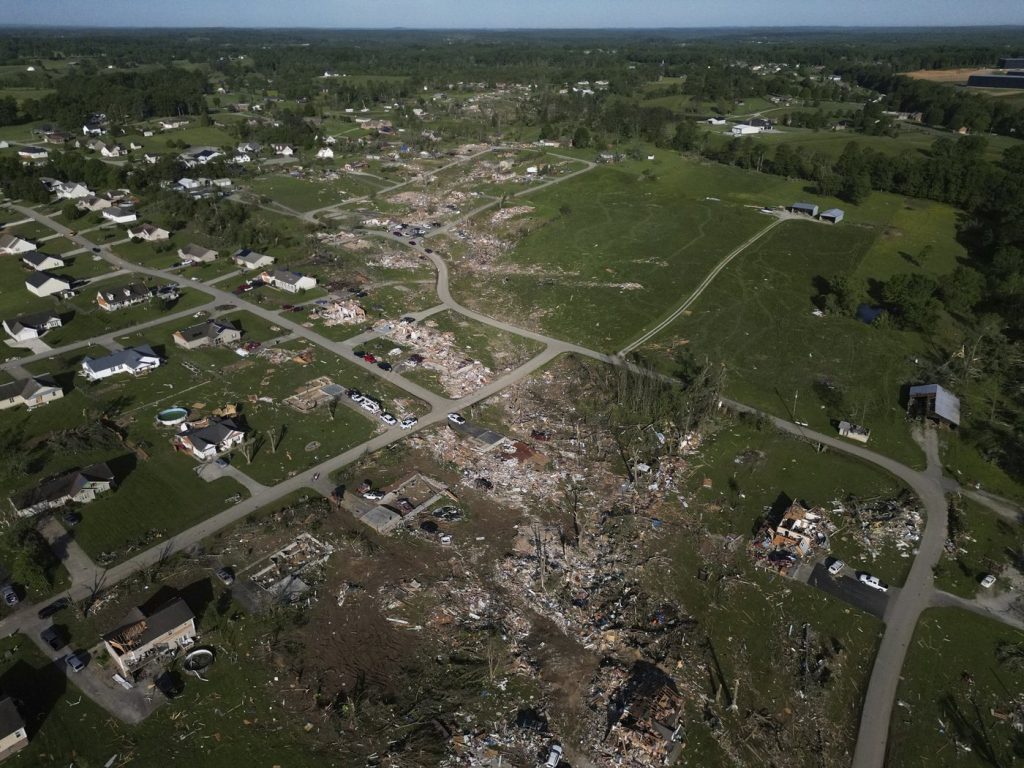As deadly tornadoes swept through the central United States, from Kansas to Kentucky, the National Weather Service (NWS) faced significant challenges due to cuts in personnel. The NWS office in Jackson, Kentucky, which had begun closing nightly amid deep cuts initiated by Elon Musk's Department of Government Efficiency, was forced to operate with overtime staffing to manage the severe weather that had already resulted in nearly 20 fatalities in its area.
Forecasters anticipate a higher likelihood of tornadoes this year compared to 2024, which was the second-busiest tornado year on record. On a recent Tuesday, forecasters calculated at least a 10% risk of tornadoes for over 10 million individuals across Missouri, Arkansas, Oklahoma, and Texas. Concerns about the agency's capability to keep pace amid staffing reductions were expressed by veterans within the weather service.
Rich Thompson, the lead operations forecaster at the NWS Storm Prediction Center in Norman, Oklahoma, acknowledged the difficulties posed by the staffing cuts but emphasized the commitment of the remaining staff to fulfill essential duties. He cautioned that the current staffing situation is unsustainable in the long run, highlighting the strain on resources.
According to NWS spokesperson Erica Grow Cei, the Jackson office managed to remain fully staffed during the recent tornado event through surge staffing, with additional support from neighboring offices. However, the overall situation reflects a leaner NWS facing an upsurge in severe weather events. The Storm Prediction Center recorded 883 local tornado reports by that Monday, a staggering 35% above the average for that time of year.
Former employees of the weather service indicated that despite the agency's efforts to issue timely warnings, it is approaching a critical breaking point. Elbert "Joe" Friday, a former weather service director, remarked that staff fatigue could impair their ability to monitor radar effectively. Tom DiLiberto, a meteorologist who was previously dismissed, likened the operational challenges to a boat with leaks that can only be temporarily patched up; there comes a point when it becomes unmanageable.
Vacancy rates in various weather service offices, including Jackson at 25%, Louisville at 29%, and Wichita at 32%, exceeded a concerning threshold identified by experts as critical for maintaining effective operations. Technologies for predicting tornadoes have advanced, but they cannot replace the necessity for a well-rested staff, which is crucial for interpreting radar data and delivering information to the public efficiently.
Budget cuts have notably reduced the frequency of weather balloon launches, essential for generating accurate forecasts. Furthermore, staff members are restricted from traveling for training initiatives that would prepare local disaster officials for extreme weather alerts. While the recent tornado activity is considered typical for this season, experts pointed out that warming Gulf temperatures contribute to the formation of more intense storms, making such outbreaks more likely.
According to meteorology professors, the correlation between climate change and tornado activity remains poorly understood, although some indications suggest an increase in tornado occurrences during traditionally cooler months. With growing populations in vulnerable areas, experts warn that the risks to life and property are escalating dramatically. Louis Uccellini, a former weather service director, cautioned that an understaffed service inevitably leads to potential oversights in disaster warnings. He expressed uncertainty about when such lapses might occur, but stressed the importance of addressing the staffing crisis immediately.












